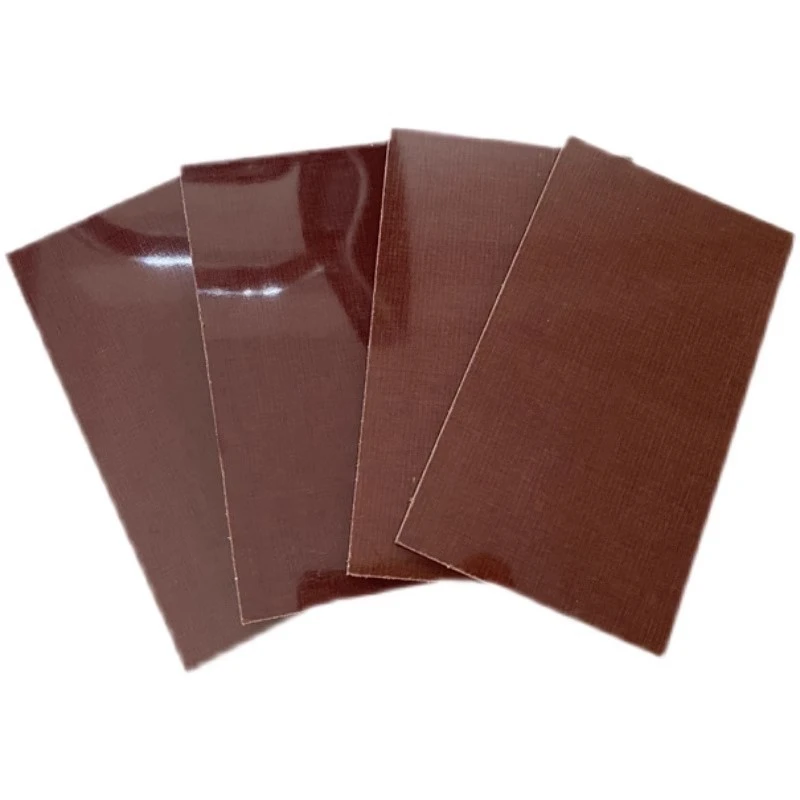Properties and Characteristics of Phenolic Cotton Sheets
Composition and Manufacturing Process
Phenolic cotton sheets are composite materials consisting of cotton fabric impregnated with phenolic resin. The manufacturing process involves layering cotton fabric sheets and infusing them with phenolic resin under high pressure and temperature. This process results in a dense, homogeneous material with exceptional properties. The cotton fibers provide mechanical strength and flexibility, while the phenolic resin imparts electrical insulation and chemical resistance.
Electrical Insulation Properties
One of the most valuable attributes of phenolic cotton sheets, also known as phenolic cotton cloth board, is their superior electrical insulation capabilities. These materials exhibit high dielectric strength, low dielectric constant, and excellent surface resistivity. The combination of cotton fabric and phenolic resin creates a synergistic effect, enhancing the overall insulation performance. This makes phenolic cotton sheets ideal for use in high-voltage applications, where preventing electrical breakdown is paramount.
Mechanical and Thermal Characteristics
Phenolic cotton sheets boast impressive mechanical properties, including high tensile strength, compressive strength, and impact resistance. These characteristics stem from the interwoven cotton fibers reinforced by the phenolic resin matrix. Additionally, these materials demonstrate remarkable thermal stability, maintaining their properties across a wide temperature range. Their low thermal expansion coefficient ensures dimensional stability in fluctuating temperature environments, a crucial factor in many electrical engineering applications.
Applications of Phenolic Cotton Sheets in Electrical Engineering
Switchgear and Circuit Breakers
In the realm of power distribution, phenolic cotton sheets play a vital role in switchgear and circuit breaker assemblies. These components are used as arc chutes, barriers, and insulating supports. The material's ability to withstand high temperatures and resist arc erosion makes it ideal for these applications. Phenolic cotton sheets help contain and extinguish electrical arcs, preventing damage to surrounding equipment and ensuring safe operation of power distribution systems.
Transformer Insulation
Transformers, essential components in power transmission and distribution networks, rely heavily on phenolic cotton sheets for insulation. These materials are used to create insulating barriers between windings, core structures, and other conductive parts. The dimensional stability of phenolic cotton sheets is particularly beneficial in transformer applications, as it helps maintain proper clearances and prevents short circuits. Their resistance to oil and moisture also contributes to the long-term reliability of transformer insulation systems.
Motor and Generator Components
Electric motors and generators benefit from the unique properties of phenolic cotton sheets in various ways. These materials are used to fabricate slot liners, phase insulators, and end laminations. The high mechanical strength of phenolic cotton sheets allows them to withstand the vibrations and stresses inherent in rotating machinery. Their excellent electrical insulation properties ensure proper separation between conductive components, preventing short circuits and enhancing overall efficiency and longevity of motors and generators.
Advancements and Future Trends in Phenolic Cotton Sheet Technology
Enhanced Flame Retardancy
Recent advancements in phenolic cotton sheet technology have focused on improving flame retardancy without compromising other desirable properties. Researchers have explored novel flame-retardant additives and surface treatments that can be incorporated into the phenolic resin matrix. These innovations have resulted in phenolic cotton sheets, also known as phenolic cotton cloth board, with superior fire resistance, expanding their applicability in high-risk environments and meeting increasingly stringent safety standards in the electrical industry.
Nanocomposite Reinforcement
The incorporation of nanoparticles into phenolic cotton sheets has emerged as a promising area of research. By adding nanofillers such as clay, silica, or carbon nanotubes, manufacturers can enhance the mechanical, thermal, and electrical properties of these materials. Nanocomposite-reinforced phenolic cotton sheets exhibit improved strength, toughness, and thermal conductivity while maintaining excellent insulation characteristics. This opens up new possibilities for their use in advanced electrical engineering applications, including aerospace and renewable energy sectors.
Sustainable Manufacturing Practices
As environmental concerns gain prominence, the electrical engineering industry is shifting towards more sustainable practices. This trend has influenced the production of phenolic cotton sheets, with manufacturers exploring eco-friendly alternatives to traditional phenolic resins. Bio-based resins derived from renewable sources are being developed and tested as potential replacements. These sustainable options aim to reduce the environmental impact of phenolic cotton sheet production while maintaining or even improving their performance characteristics.
Conclusion
Phenolic cotton sheets have proven to be invaluable assets in the field of electrical engineering, offering a unique combination of properties that make them suitable for a wide range of applications. From their role in switchgear and transformers to their use in motors and generators, these versatile materials continue to evolve and adapt to meet the changing demands of the industry. As advancements in flame retardancy, nanocomposite reinforcement, and sustainable manufacturing practices unfold, the future of phenolic cotton sheets in electrical engineering looks brighter than ever. Their continued development and application will undoubtedly contribute to safer, more efficient, and environmentally friendly electrical systems in the years to come.
Contact Us
If you're interested in learning more about our high-quality phenolic cotton sheets and how they can benefit your electrical engineering projects, we invite you to get in touch with our team of experts. With over two decades of experience in producing and supplying insulating sheets, we're well-equipped to provide you with the perfect solution for your needs. Contact us today at info@jhd-material.com to discover how our phenolic cotton sheets can enhance your electrical engineering applications.






